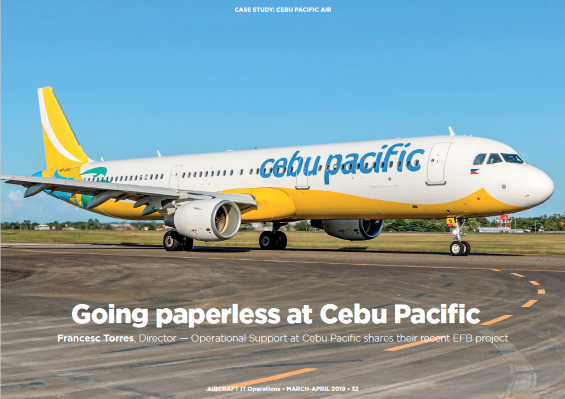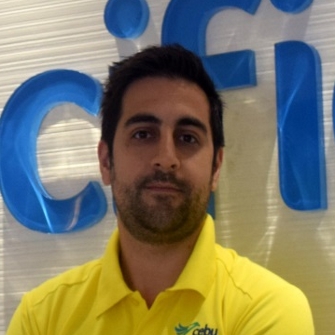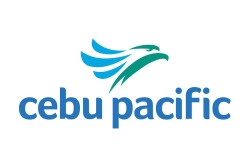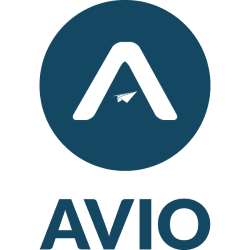Articles
| Name | Author |
|---|
Going paperless at Cebu Pacific
Author: Francesc Torres, Director - Operational Support at Cebu Pacific
SubscribeGoing paperless at Cebu Pacific

Francesc Torres, Director – Operational Support at Cebu Pacific shares their recent EFB project
It’s the business of an airline to take people on a journey but, in this article, I want to share with readers a different type of journey and one which all airlines have to take. It is the journey to a paperless cockpit and to an Electronic Flight Bag (EFB) solution, a journey with which Cebu Pacific has some very recent experienced. We’ll break the journey down into an introduction to Cebu Pacific; our EFB journey; where we stand today and looking to the future; plus a summary. So to set the scene, I’ll tell you something about the subject of this case study, Cebu Pacific.
CEBU PACIFIC
Since its first domestic flight from Manila to Cebu in 1996, Cebu Pacific passenger numbers and revenue grew steadily until 2005 and, since then, on a very healthy trajectory to 19.7 million passengers and US$1.35bn in 2017 (figure 1).

Figure 1
The key factor in this success was the shift of Cebu Pacific to the low cost carrier (LCC) business model, which has made air travel accessible to many more people than ever before, enabling greater mobility around the region and helping develop a number of regional centers by putting them into more business maps than before.
From its first flights between Manila and Cebu, Cebu Pacific now serves practically all of the major centers in the Philippines, as well as to the rest of South East Asia, China, Japan and Australia.

Figure 2
And as the route network grew (figure 2), the Cebu Pacific fleet kept pace.
As of end-2018, the Cebu Pacific fleet had grown to 71 aircraft, mainly Airbus and ATRs. We are about to embark on a next wave of re-fleeting with the A321NEOs we ordered starting to come into service. By 2022, the Cebu Pacific fleet will grow to 83 aircraft.
Amidst headwinds such as increasing competition, rising customer expectations, fuel price and foreign exchange volatility; we’ve managed to expand and improve efficiency. We’re also very proud to be one of the most profitable airlines worldwide by net margin as ranked by the Airline Weekly Global Earnings Scoreboard.
THE EFB JOURNEY
It was against that background of success that Cebu Pacific decided in 2016 to embark on a program to make our cockpits wholly electronic and paper free.
Starting point
At the start of 2016, Cebu Pacific’s EFB was based on a laptop running ‘Performance’ – FlySmart for Windows and offering very little in the way of automation. Crews picked up the laptop at Dispatch before boarding the aircraft and there remained a full paper suite of documents and manuals on board. In short, it wasn’t really an electronic flight bag as the term is understood today: it allowed very few documentation revisions and scarcely any performance updates. It was also labor intensive with its paper based updates, archiving and all the paraphernalia to support a compliant paper based system. It was clearly time for a modernization program to make the EFB into an actual, modern electronic flight bag.
Philosophy
Although there was no doubt that a modernization program was needed, there were some business conditions that had to be met to ensure that the program itself did not impede operations and that it would be able to serve the business into the future. These conditions were that the program should be implemented over a short time scale to minimize disruption; that it should be able to deliver a fast return on investment (ROI); be easily scalable to ensure that it would still work in the future; and that the system could be maintained with minimum manpower – a key requirement. It was also determined that the iPad should become the main device through which crew could access the airline’s services such as operational Apps (performance, charts, flight plan, etc.) and non-operational Apps (learning management system – LMS – rostering system, logbook, etc.).
Our first step was to start seeking value added partners who could deliver reliable technological products and support, and who would be willing to work as partners with Cebu Pacific, not just product vendors.
The plan
As with any program, we first devised a plan as our guide and as a benchmark against which to judge progress (figure 3).

Figure 3
In the first quarter of 2016, we deployed iPads for every member of flight crew running FlySmart for iPad. At the same time, we implemented mobile device management to keep track of the devices and to ensure that they were always up to date or that, if one device hadn’t had any updates accepted, we knew about it and were able to address the matter with the device holder. In the second quarter of 2016, the Charts App was deployed to the new devices along with the Documentation App and email App. Then, in the third quarter, Ops approval was secured for the new Performance App. Hard copies of take-off and landing charts were removed from the cockpits. At the end of 2016, the new Fuel App was introduced with the crew self-monitoring their performance.
All charts on hard copy were removed in the first quarter 2017, along with general paper documentation. In the second quarter, the Fuel Slip was removed in favor of an automated App. The third quarter of 2017 saw the introduction of automated Gate Allocation Notices for the crew and towards the end of 2017, we were ready for the initial test of the Electronic Flight Folder (EFF). This was followed by iPad improvements in the first quarter of 2018 and Ops approval leading to full EFF paper removal in the second quarter 2018.
A culture change
It soon became clear that, if we were to leverage the greatest value from the new system, there would need to be a culture change within the business. For a start there would have to be more direct decision making in the business with regard to product selection, implementation and the like. Therefore, we implemented a very short approval matrix for these projects, with a predefined set of requirements needed for the approval (business Case, maximum ROI, etc.), as well as empowering mid-management to make decisions, and not running all approval through ‘VP’ or C level executives.
We also decided that, whenever possible, Cebu Pacific should use commercial off-the-shelf solutions and should aim to get them into service in a short time in order to get the immediate benefits as soon as possible. After that, we’ll continue to develop all the additional benefits that a solution could offer. Also, we’ll always aspire to implementing standard and world-wide best practices. In the event that we undertake any internal developments, we’ll try to keep the process Agile and work with Sprints to ensure that progress is continual and, in the same vein, we’ll always break down developments into small quick solutions. Finally, in all cases, to ensure that ideas match reality in practice, we’ll aim to facilitate higher levels of involvement from the users, the people for whom any solution is designed, Flight deck Crews.
WHERE WE STAND
The current situation
We have made it our policy at Cebu Pacific to partner with best-in-class providers for various solutions, services and tools that we need. Our mobile device management, email and documentation are all managed by Air Watch, charts are supplied by NAVBLUE and the electronic flight plan is in the very capable hands of AVIO. Fuel management, a very important element in any airline, is handled by Open Airlines to save fuel, reduce emissions and contribute to our drive towards sustainability at Cebu Pacific.
The elimination of as much paper as possible from our processes was important to us to minimize risk of errors. The flight plan and briefing information (flight folder) were the last paper-based processes in our operations, and we were determined to replace them with an electronic solution. For the electronic flight folder (EFF) Cebu Pacific partnered with AVIO for speed and agility. In light of that, the server set-up for the new solution plus the integration with other systems (flight plan, Operations system, loadsheets, active directory) was completed in just eight weeks followed by a twelve-week testing period with a group of Cebu Pacific pilots to ensure involvement of the end-user community. Moreover, paper weighs a lot, which burns fuel simply to move around.
What comes next?
Having now established the new solution and EFF, our thoughts have turned to what should come next in order to make best use of the new solution and the additional opportunities it offers. Three projects in particular were underway at the time of this writing.
First, a tool with pre-reporting capabilities to allow the flight deck to communicate with Dispatch and with other crew members in the cabin; pre-flight capability to receive live updates on aircraft services; as well as post-flight capability. We are even thinking of including a Chatbot. The second, a ticketing tool for crew reports to ease reporting tasks and increase feedback to the crew; and the third relates to weather and turbulence and aims to provide better quality weather data to the flight crew and to dispatch.
With all of these changes, Cebu Pacific is well aware of the need to introduce changes at a pace that will allow staff to fully absorb the new ways of doing things in Flight Operations and to adapt to cultural changes when working with new processes.
SUMMARY
At the time of this writing, the iPad EFB is the main point of access for the flight deck crew to the airline’s systems and processes through Operational and non-Operational Apps. The only paper left in Operations is the ACARS loadsheet which was scheduled to be removed and transferred to AvioBook.
Our ground staff is steadily veering away from the old culture of managing paper to one of monitoring and analyzing. The team is slowly improving processes and improving these based on experience, which we are confident will lead to more analytics and deploying the so-called Big Data.
That has been our journey at Cebu Pacific from paper-based tools and processes, with all of the labor, weight and risk of error, to fully paperless electronic processes that not only improve what we already do but also offer new opportunities to improve the business.
Contributor’s Details
 Francesc Torres
Francesc TorresFrancesc is the Director Operations Support in Cebu Pacific Air leading the digital transformation, the introduction of big data and AI in the operations arena, improving operational efficiencies, and merging market technologies and trends with the Airlines’ Operations. His current duties also include Fuel Optimization, Dispatch and oversight on Technical Operations Support. He holds an engineering degree in Aeronautics and a Bachelor’s Degree in business management, complemented with several continuous professional courses in INSEAD and Stanford.
 CEBU Pacific
CEBU PacificCebu Air, Inc., operating as Cebu Pacific and informally known as Cebu Pac, is a Philippine low-cost airline based on the grounds of Ninoy Aquino International Airport, Pasay City, Metro Manila, in the Philippines. It is Asia’s oldest budget or low-cost carrier airline, founded in 1988. CEBU operates a 71 aircraft Airbus and ATR fleet with A320, 321 and 330 models plus 16 ATR 72-600 on order for its regional branch, Cebgo.
 AVIO
AVIO
AVIO, a Thales Group company, supports airlines as a partner in their digital strategy. AVIO offers a comprehensive and highly integrated suite of ground and flight applications, systems and solutions that connect all stakeholders and key assets in a safe and secure manner. This, combined with expertise in data and cyber security, gives airlines an edge through greater efficiency and ultimately sustainable, profitable growth
Comments (0)
There are currently no comments about this article.

To post a comment, please login or subscribe.